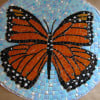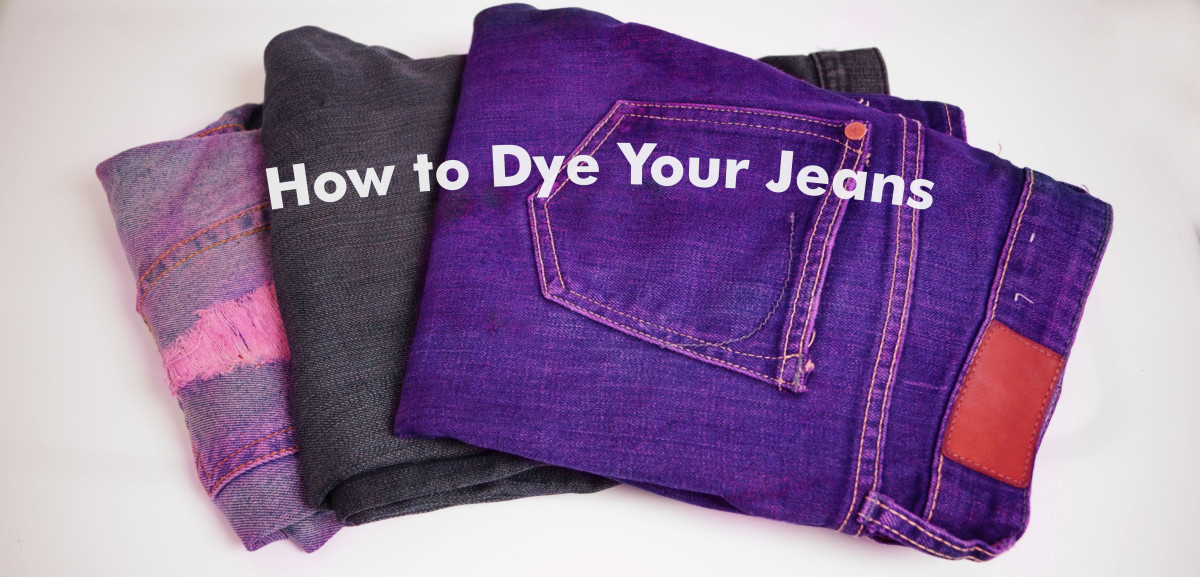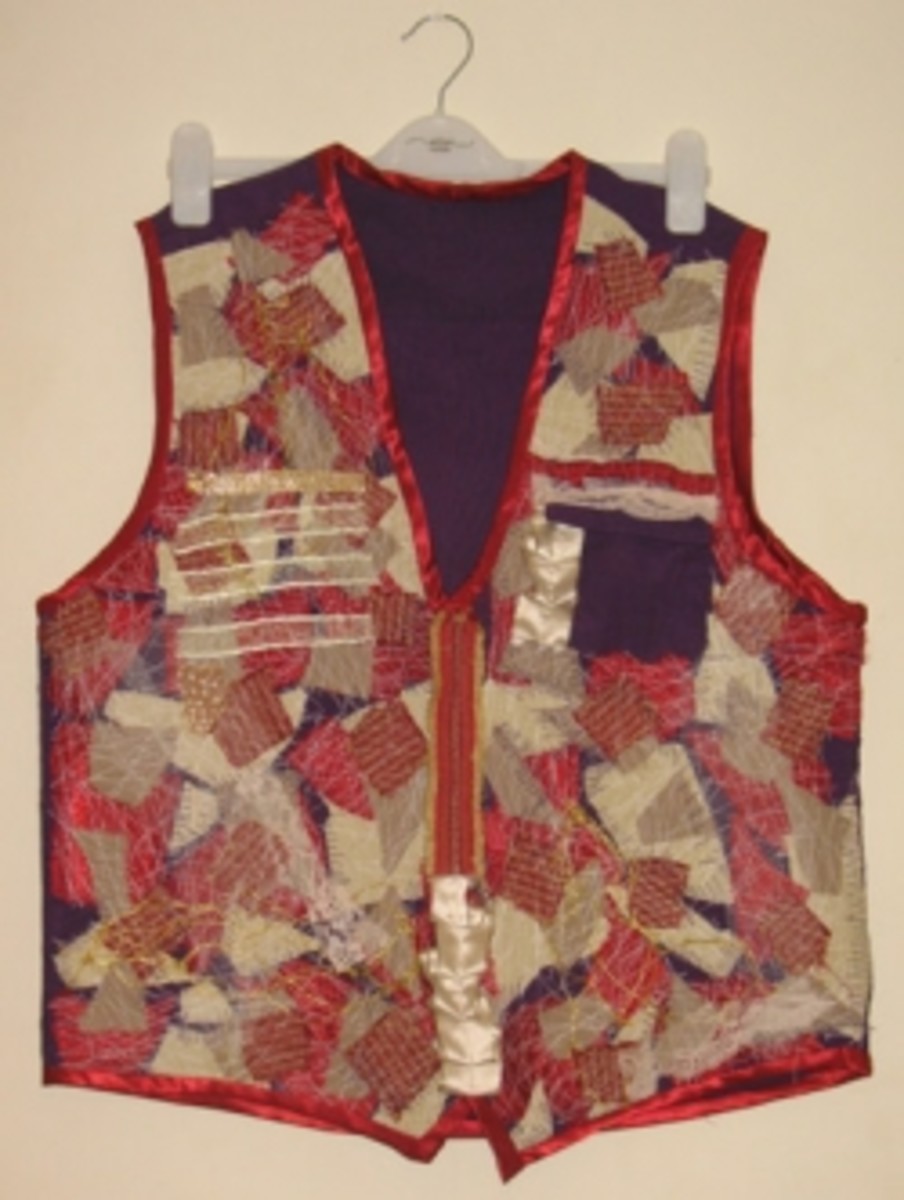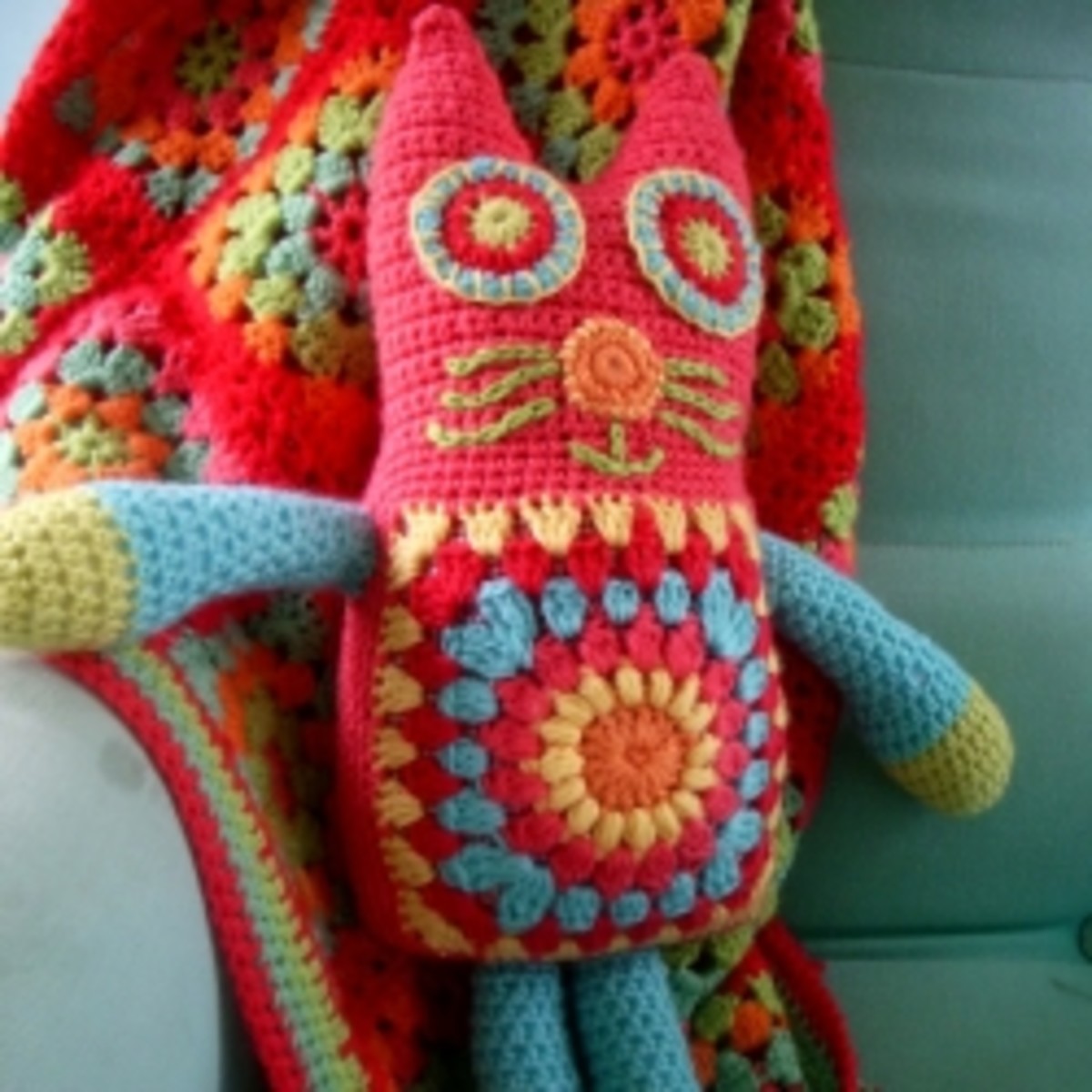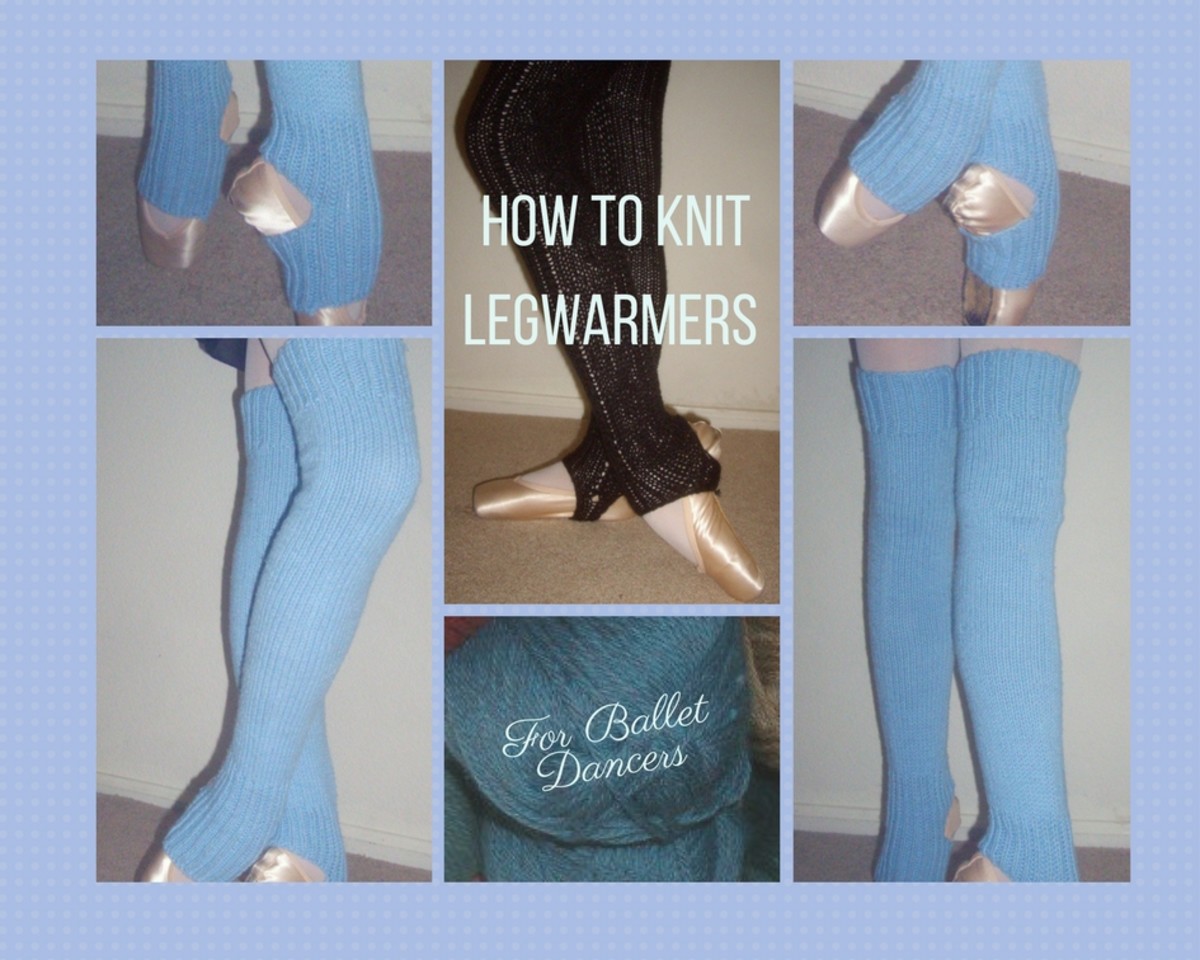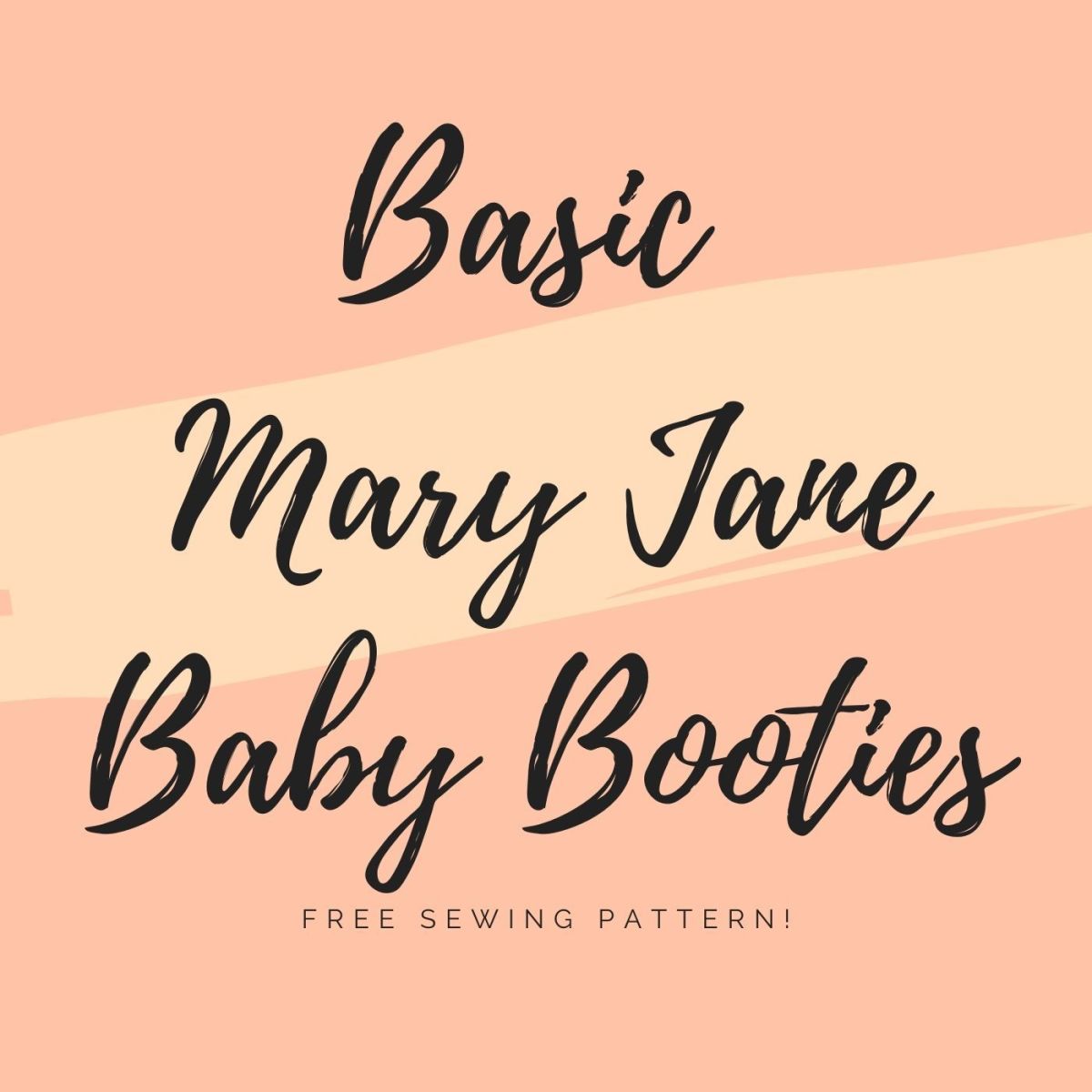- HubPages»
- Arts and Design»
- Crafts & Handiwork»
- Textiles
Ombre Dip-Dye
How to DIY dip-dye ombre, all you need is bleach, dye, and salt!
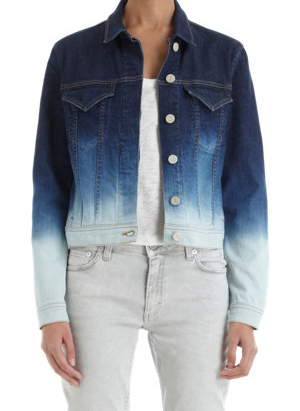
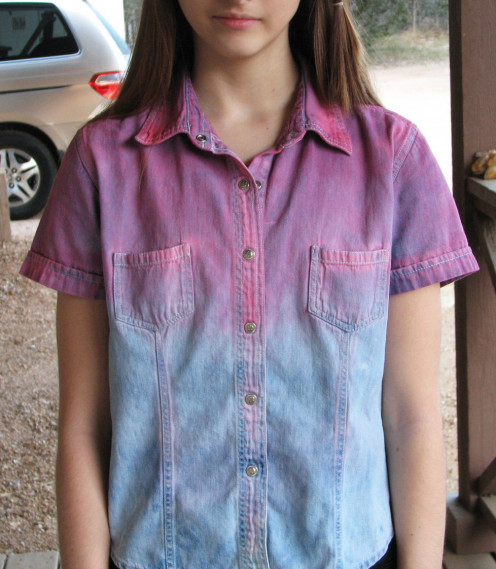
Here's an easy way to ombre dip-dye a denim shirt, jacket, or any other garment or accessory. You probably have all the tools and equipment on hand; if you already have bleach, all you need to buy is the dye. It is usually for sale in your local grocery store, but if they don't have your color, you can order it on line. Just type in "Rit Dye" in the search engine.
Ombré – don’t you love the word? I do. It is French and means “to shade.” Here I use it to describe a type of dip-dye effect, where fabric shades from light to dark, or from dark to light, or an additional color can be introduced.
This technique can be used on all kinds of clothing and accessories.
Supplies we used:
1. Denim shirt. It’s best to use all-natural fabric, like cotton, rayon, linen, or silk (we used a cotton shirt, from our local Goodwill store).
2. Liquid bleach
3. Rit Liquid Dye (we used Petal Pink)
4. Glass measuring cup
5. Plastic bin or bucket, or a deep sink
6. Metal spoon with a long handle (or an old wooden spoon)
7. Rubber gloves
8. Salt
9. Dishwashing liquid
10. Plastic cloth to protect your work surface
Instructions:
1. First launder the shirt and leave it wet.
2. Cover your work surface with a plastic cover.
3. Carefully pour out two cups of bleach into your bucket or sink.
4. Add enough water so that the liquid covers the portion of the garment you are going to bleach. In our project, we bleached the top of the garment.
5. Holding the shirt with a hand on each side of the bottom, lower the top into the bleach solution, taking care to keep it even.
6. With a long-handled spoon, poke the submerged section of the shirt here and there, keeping it submerged. Wait about 10 minutes, and if you need it to be lighter, pour more bleach into the bucket, taking care not to pour directly onto the fabric. When you can see a distinct bleached look, remove the shirt and dispose of the bleach solution.
7. Rinse the shirt well in cool water to remove all traces of the bleach.
8. Shake liquid dye bottle and measure ½ cup liquid dye into a disposable container. Add 1 cup salt and 4 cups very hot water; stir well.
9. Pour dye solution into the same plastic bin or sink. Add 1/2 gallon very hot tap water and a squirt of liquid detergent; stir well.
10. Submerge the top of the shirt into the dye solution and hold for about 10 minutes, again using the handle of the long spoon to push the fabric down here and there. If you wish, you can just submerge the topmost part of the shirt, hold for about 5 minutes, then submerge the rest of the bleached portion and you will get a shaded effect.
11. Remove fabric from dye bath and and rinse under cool running water. Then rinse in warm water until water runs clear. Wash in warm water with detergent. Rinse thoroughly and wring out excess water. Hang to dry.
12. After the shirt was dry, I ironed it (wrong side out) just to make sure the dye was permanently set. Since then we have washed it normally with other dark clothes and dried it in the dryer and it doesn’t fade or bleed.
It sounds like a lot of instructions, but it was really quick and simple.
To recap:
In a nutshell, we started with a wet blue denim shirt (purchased at a thrift shop). We made a solution of bleach and hot water (didn't measure). We dipped the top of the shirt in it. After about 10-15 minutes we lifted it out and rinsed it well in cool water.
Then we made up the dye bath of Rit liquid dye (Petal Pink) and salt (again, didn't measure but probably half the bottle of dye and maybe a cup of salt), dissolved in hot water. We dipped the top of the shirt in the dye bath for a short amount of time. I took an artist brush and pulled some of the dye down the front of the shirt in three lines. Then we rinsed the shirt in cold water until clear.
I hung it outside to dry and then ironed it with a hot iron.
Next, we are going to add pyramid studs. You can find them on eBay by searching for "2 prong nailhead." I am going to order the ones made in the USA and try attaching them by hand. (will come back and report.)
